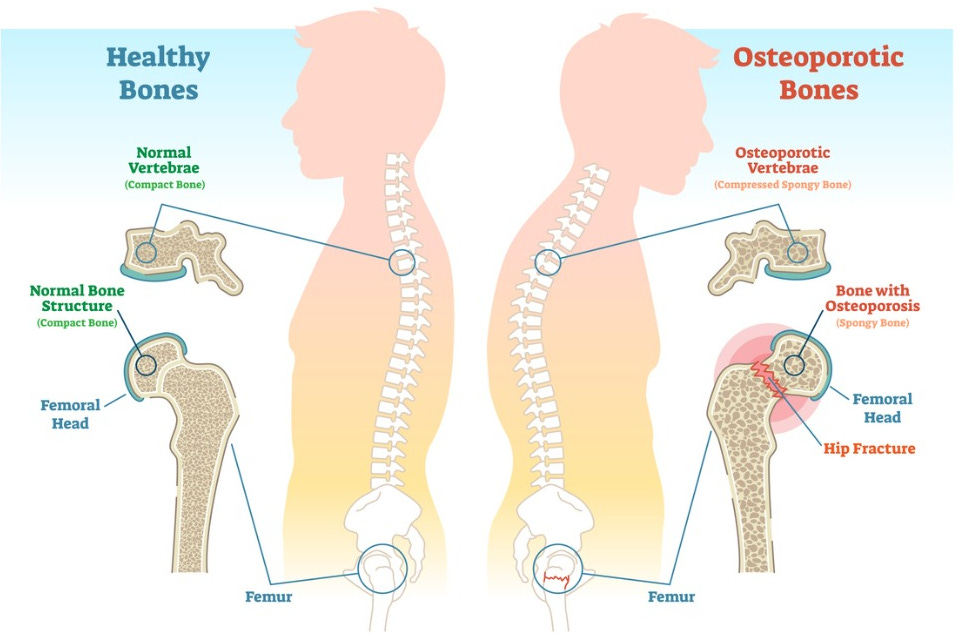
Osteoporosis can be defined as decreased bone mass and a shift in the structure of bone, resulting in a reduced quality of bone (Tufts, 2011). The quality of bone cannot be assessed, however, bone mineral density (BMD) can be screened using dual energy X-ray absorptiometry (DXA) scans to determine mineral content of bone (Tufts, 2011). Osteopenia is a bone density that is lower than normal peak density but not low enough to be classified as osteoporosis (Tufts, 2011).
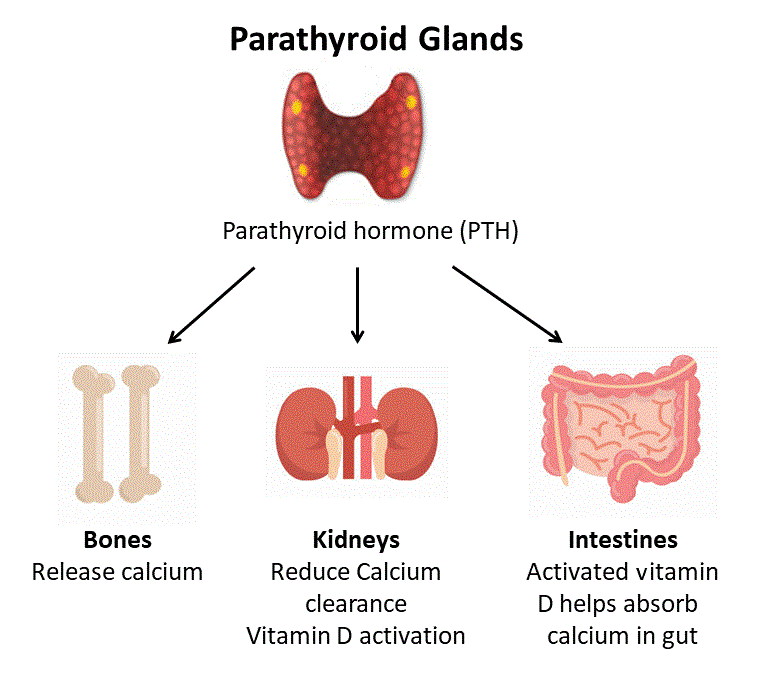
Tufts (2014) also noted that both systemic and local factors influenced bone metabolism, which causes bone formation or absorption. Such factors included parathyroid hormone (PTH), calcitriol (1,25-hydroxy vitamin D), and calcitonin (Tufts, 2011). PTH’s role is in maintaining serum calcium levels, where said hormone is released from the parathyroid glands stimulating the kidneys to conserve calcium by increasing resorption. PTH also maintains serum calcium by increasing osteoclast activity (breaks down bone and releases calcium) (Tufts, 2011).
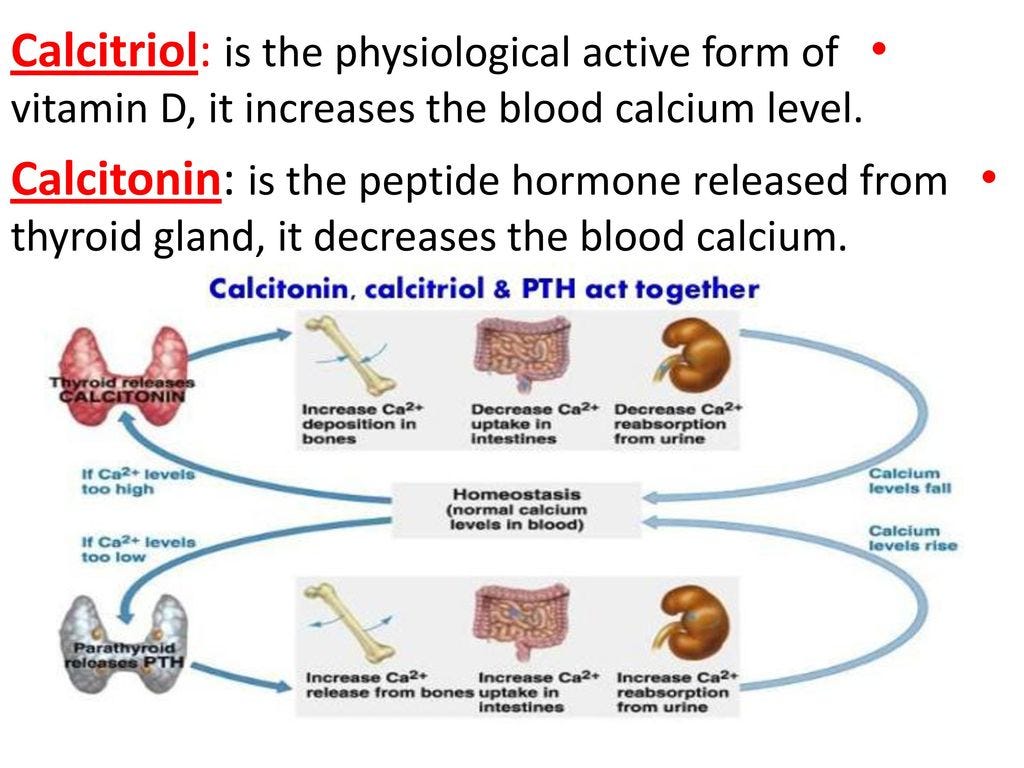
Elevated levels of PTH also stimulates the production and secretion of calcitriol from the kidneys. Calcitriol is produced from both endogenous and dietary vitamin D by the liver and kidneys and helps with the mineralization of bone by increasing absorption of calcium from the intestines (Tufts, 2011). Calcitonin appears to directly inhibit osteoclast-mediated bone resorption and promote renal calcium excretion; however, this effect appears to be transient and may have little chronic effect (Tufts, 2011).
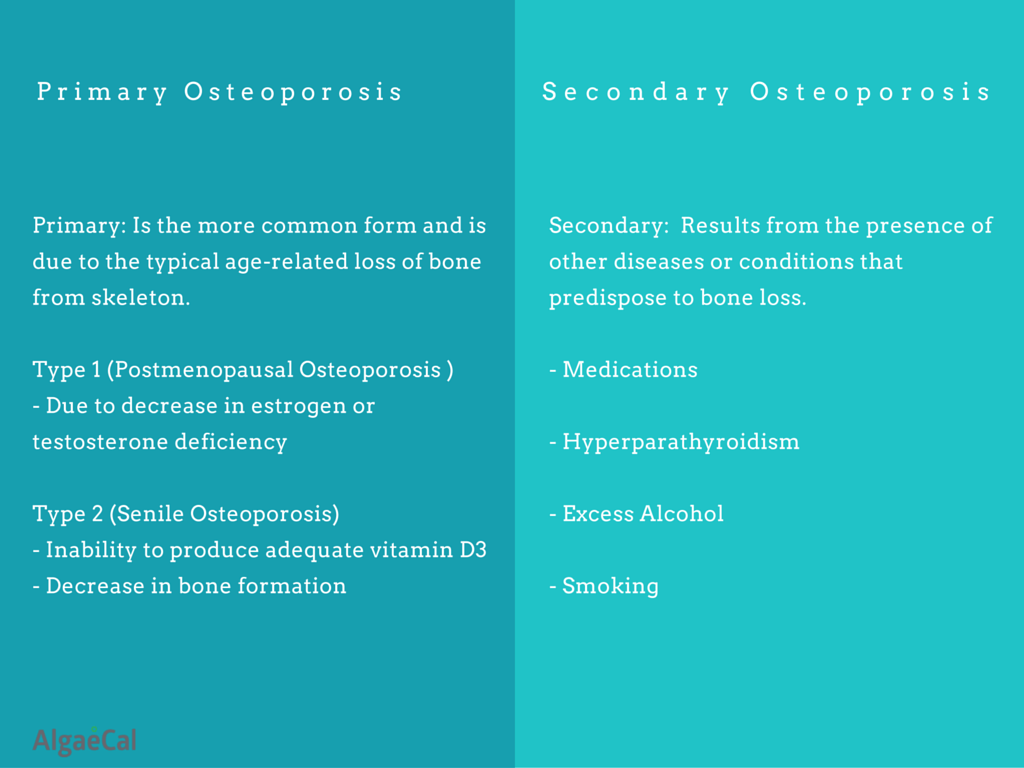
Primary osteoporosis emanates from an aberration in the bone metabolism cycle. Such pathology is seen in postmenopausal women from an imbalance in bone formation and resorption (Tufts, 2011). Osteoporosis is also caused from processes outside of bone metabolism, and is defined as secondary osteoporosis in such instances. Secondary osteoporosis can come from hyperthyroidism, celiac disease, hyperparathyroidism, and neuromuscular/rheumatologic disorders (Tufts, 2011). Other risk factors associated with osteoporosis include smoking, alcohol use, age, history of previous fractures, and the use of glucocorticoids (Tufts, 2011).
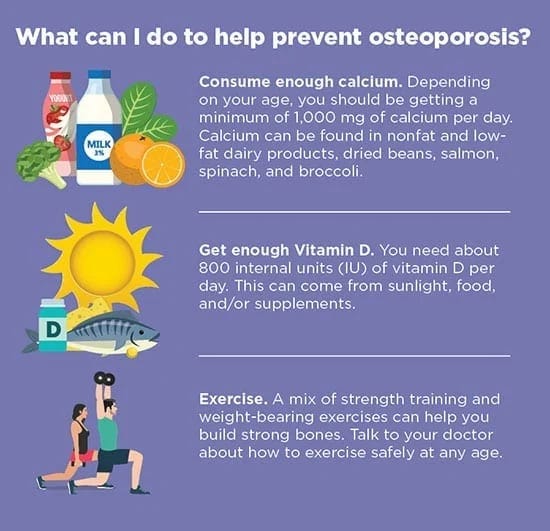
Tufts (2011) suggested that the first line of intervention for osteoporosis is lifestyle modifications, which could include increased physical activity, cessation of smoking and excessive alcohol consumption, fall prevention strategies, and optimized nutrition including 1200 mg of calcium and 800-1000 units of vitamin D. If said micronutrient daily requirements cannot be completely met through food consumption, supplementation is warranted in those individuals at risk for osteopenia/osteoporosis.

Relatively heavy and compressive exercise (all progressed slowly) is also key to stimulating new bone formation and slowing resorption. Such examples of activity could include running and compound exercises such as hip and knee dominant exercises (i.e., deadlifts, squats) and horizontal and vertical pushing exercises (i.e., chest presses and shoulder presses). Such exercise prescriptions are relevant, as evidence suggests compressive exercise is more effective than isolation/non compressive exercises in building bone density (Shanb & Youssef, 2014).
In conclusion, osteoporosis and osteopenia can be prevented/managed by lifestyle interventions that include increased physical activity, cessation from recreational drugs, and increased vitamin D and calcium consumption.
References
Shanb, A. A., & Youssef, E. F. (2014). The impact of adding weight‑bearing exercise versus nonweight bearing programs to the medical treatment of elderly patients with osteoporosis. Journal of Family and Community Medicine, 21(3), 176-181.
Tufts, G. (2011). New treatment approach for osteopenia. Journal of Midwifery & Women’s Health, 56(1), 61.
-Michael McIsaac
